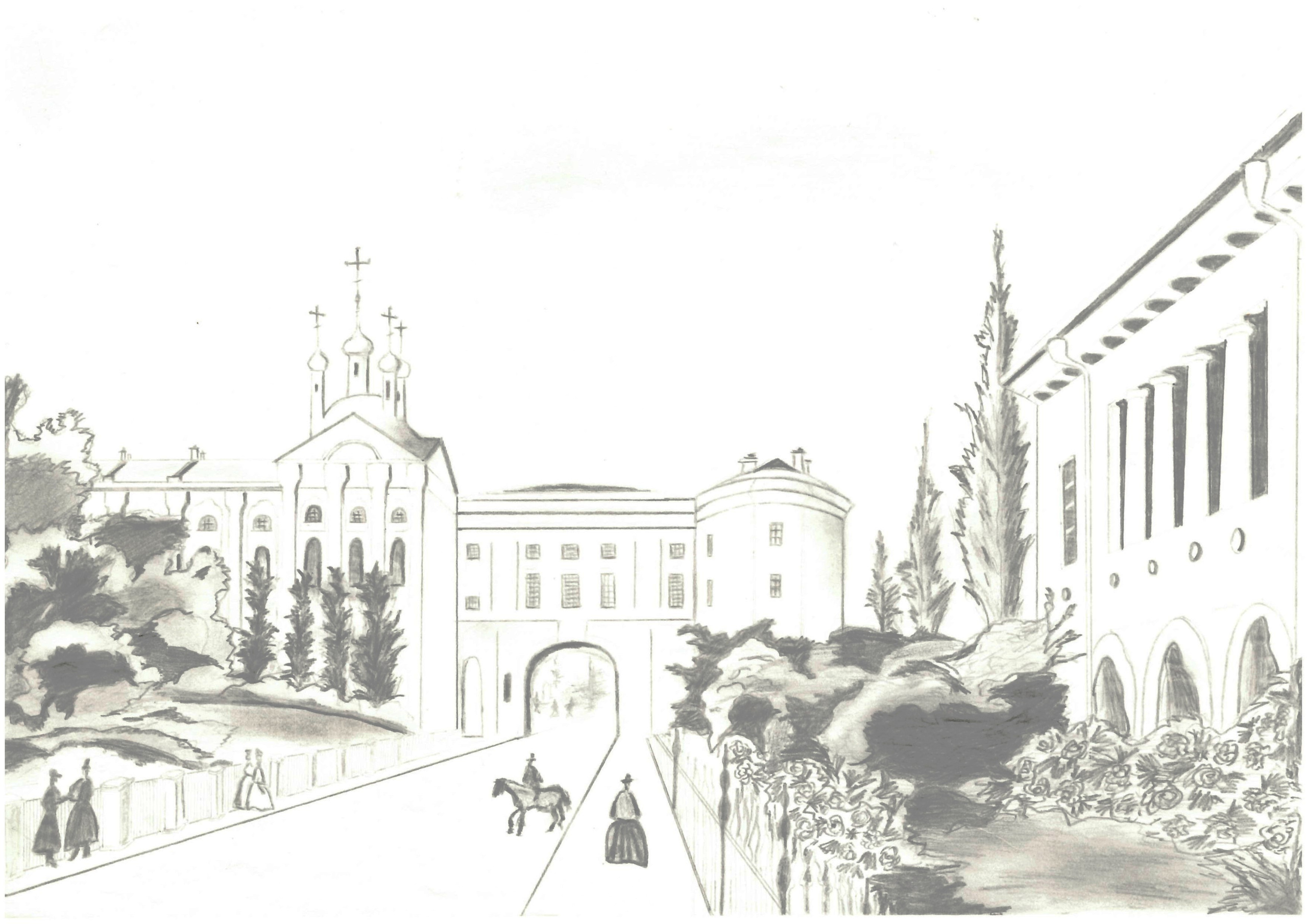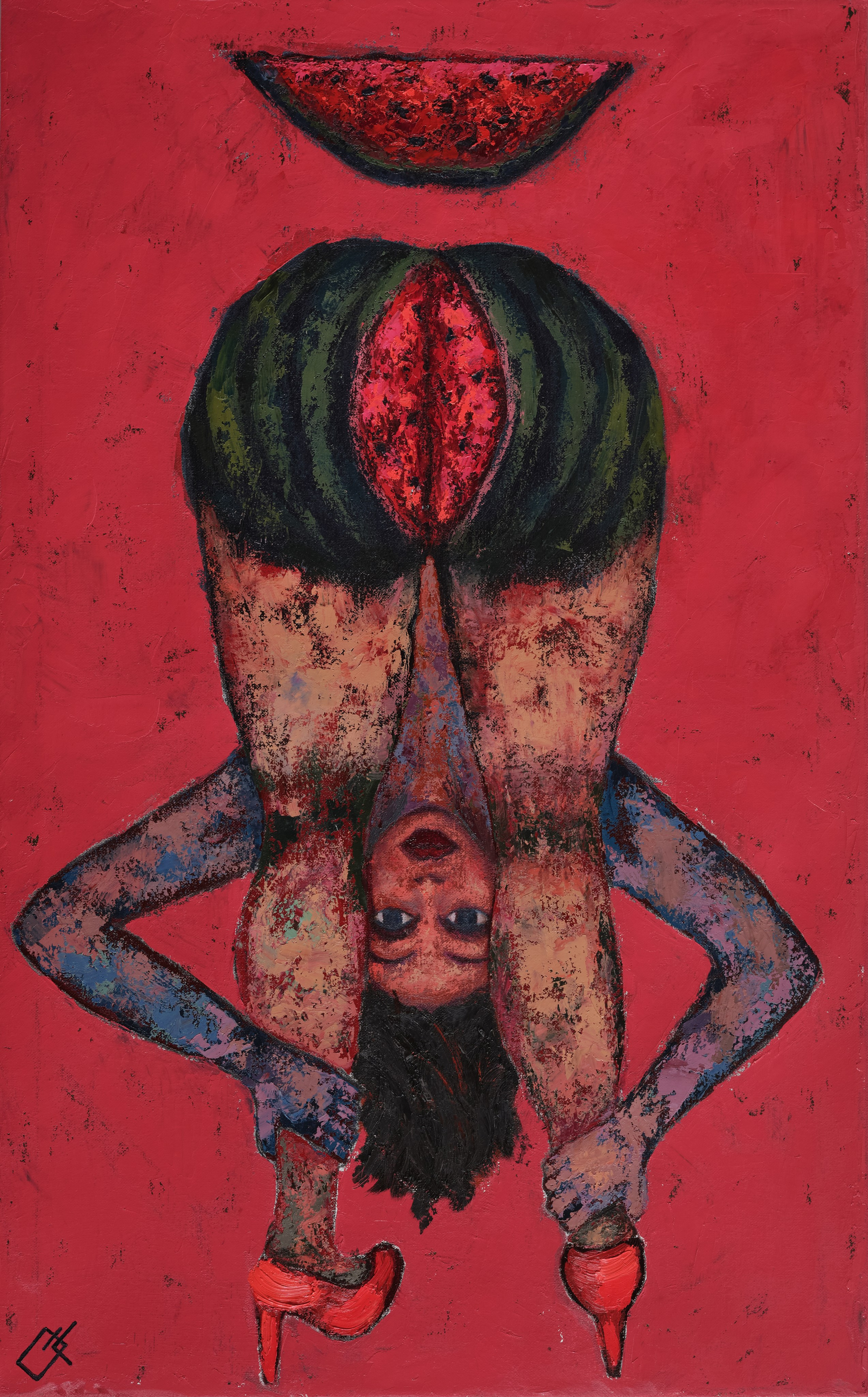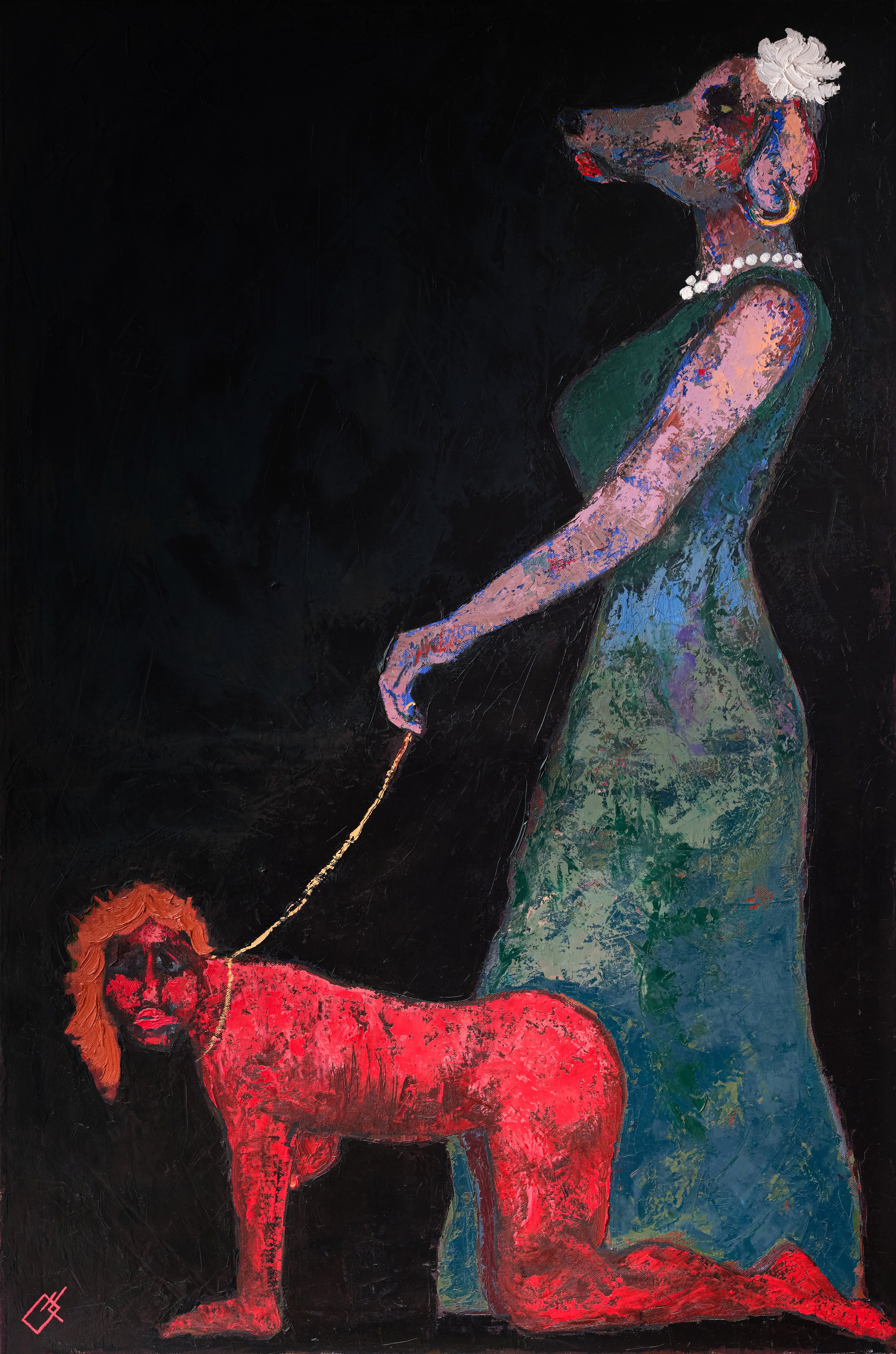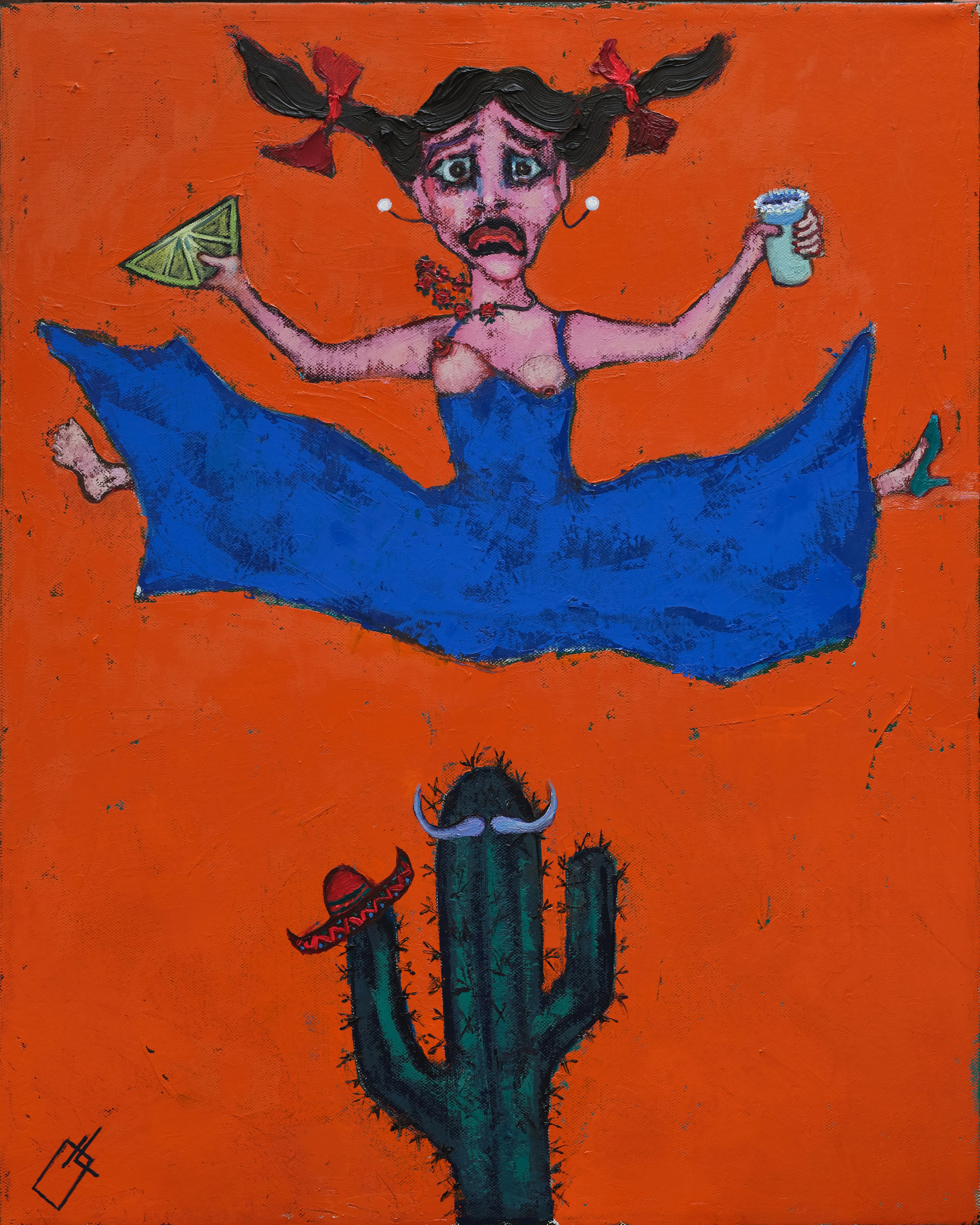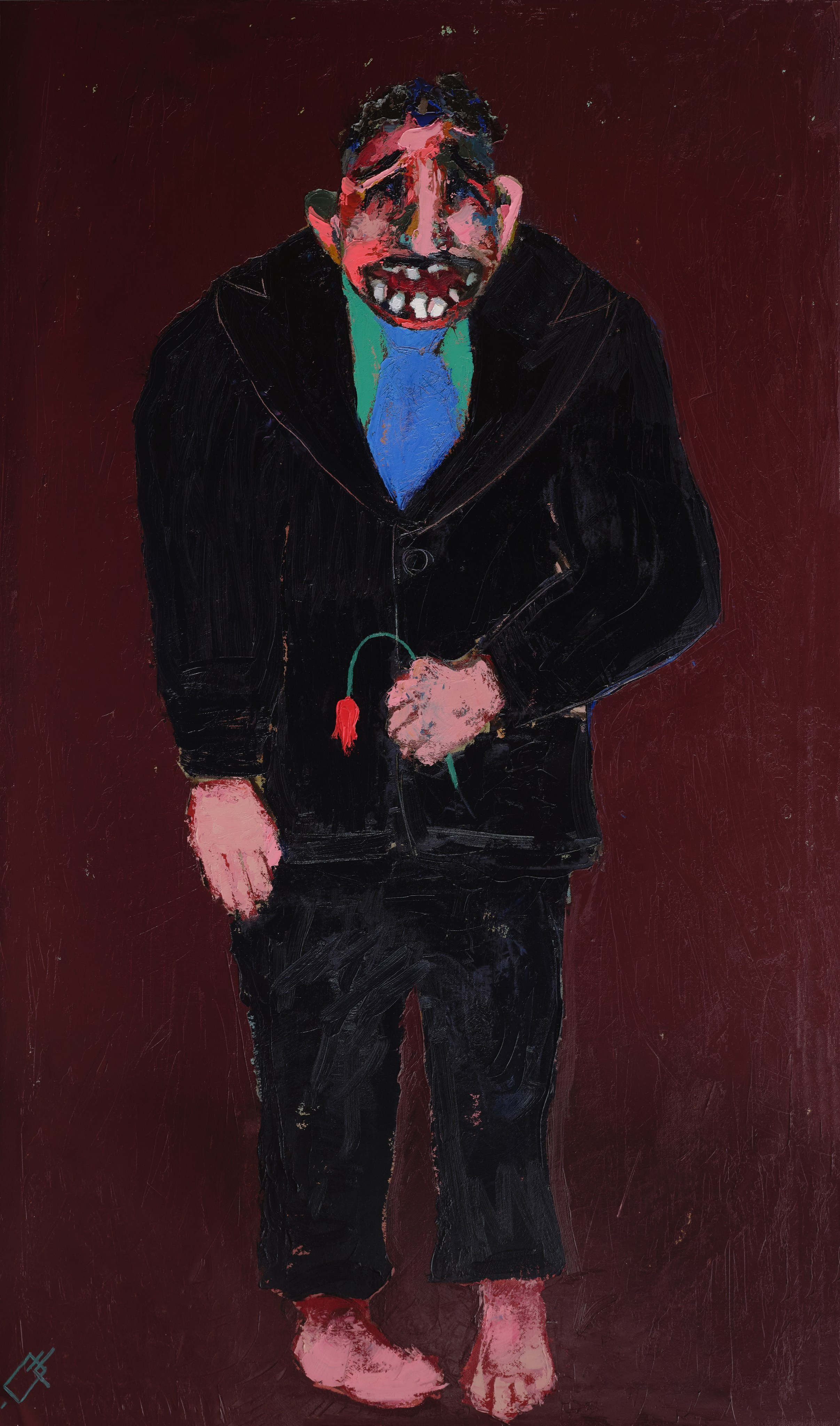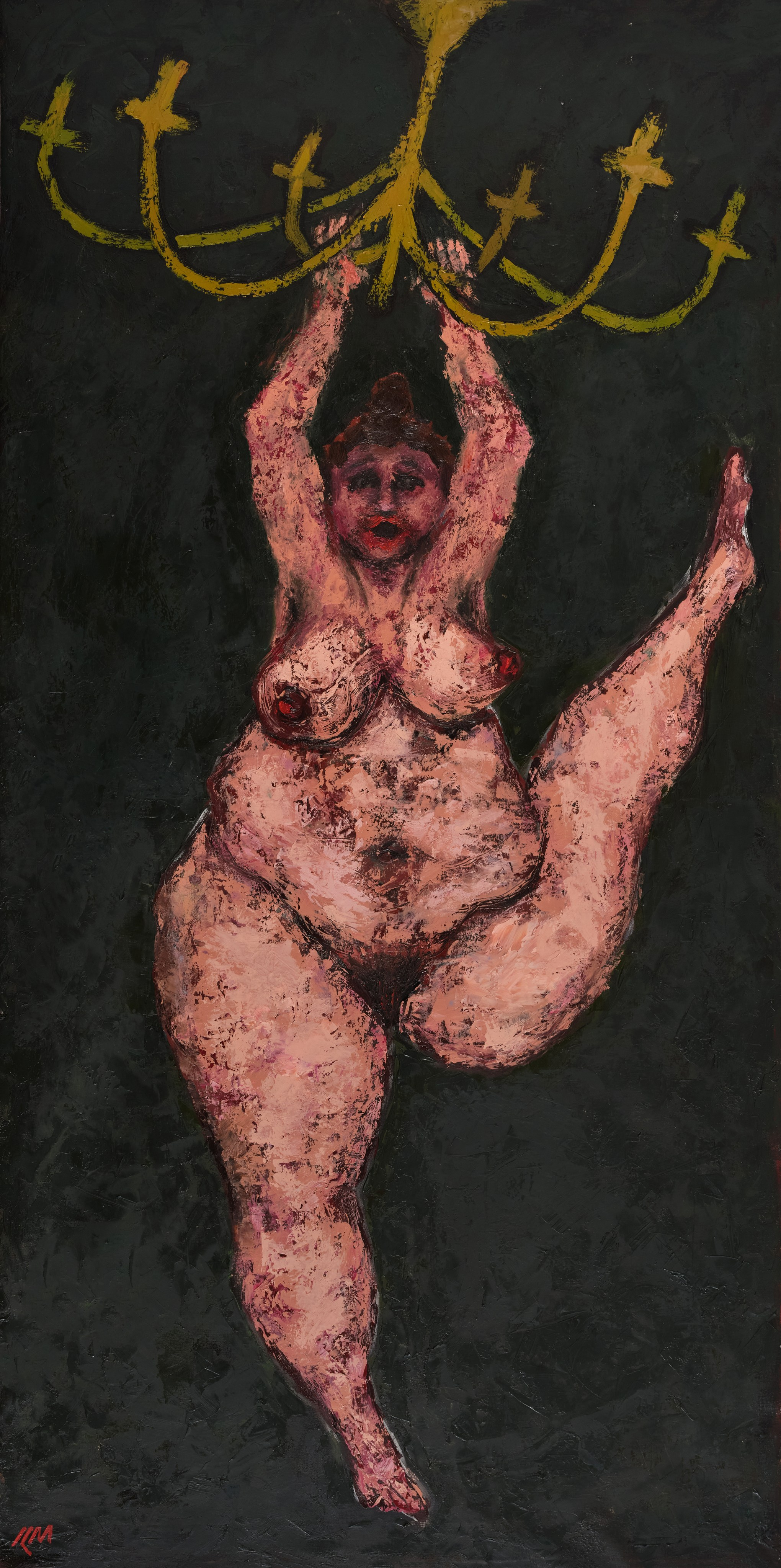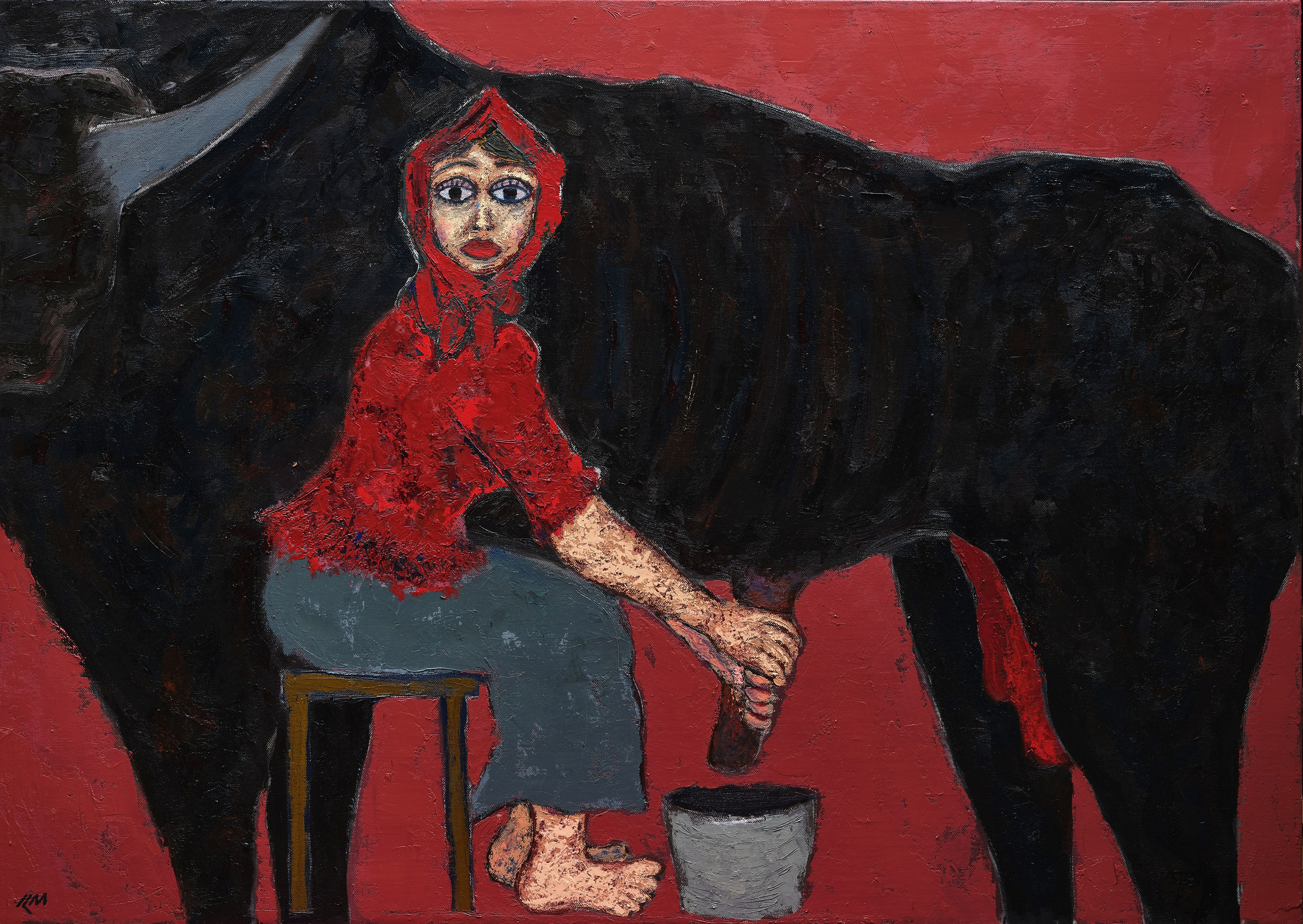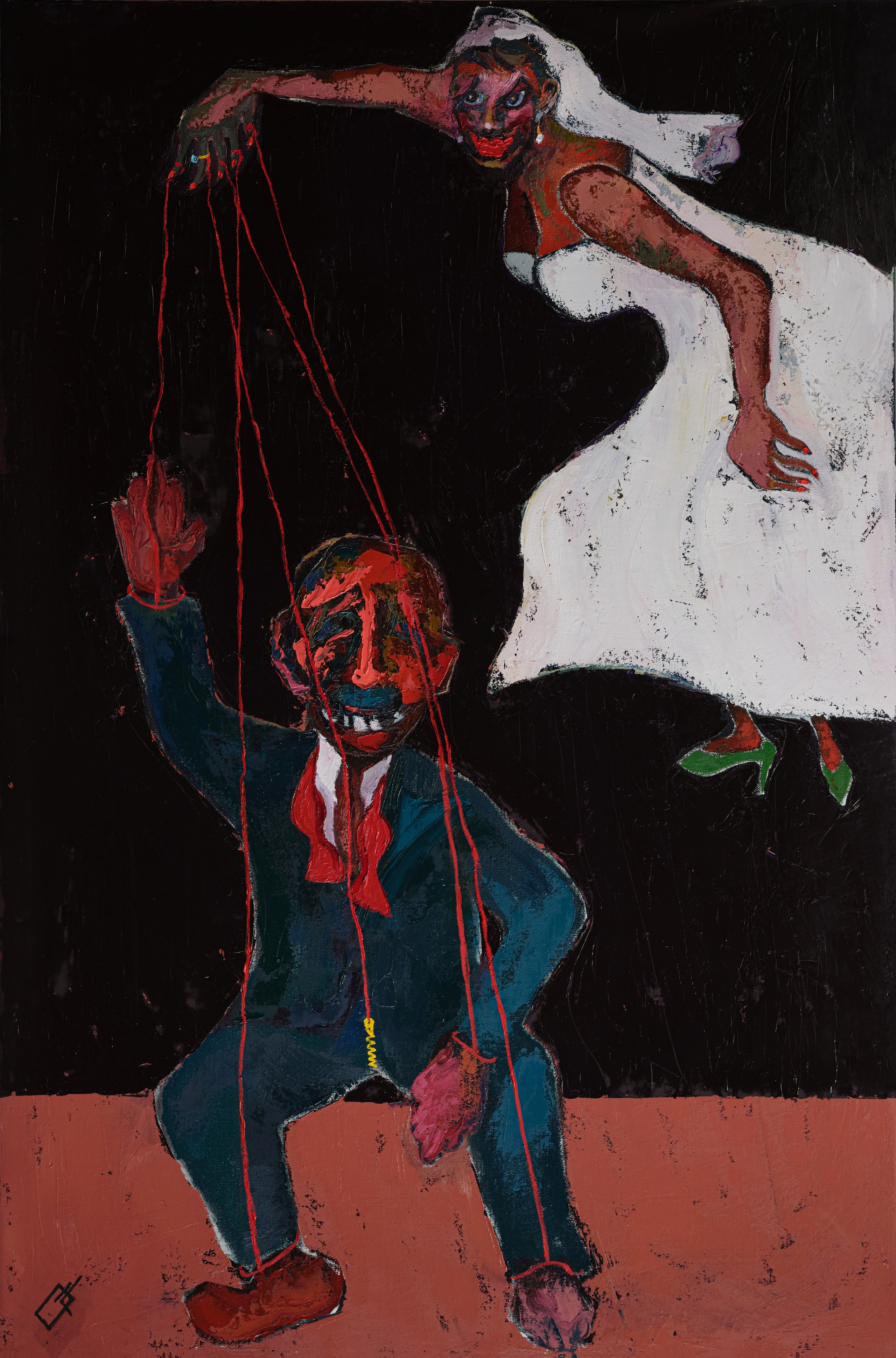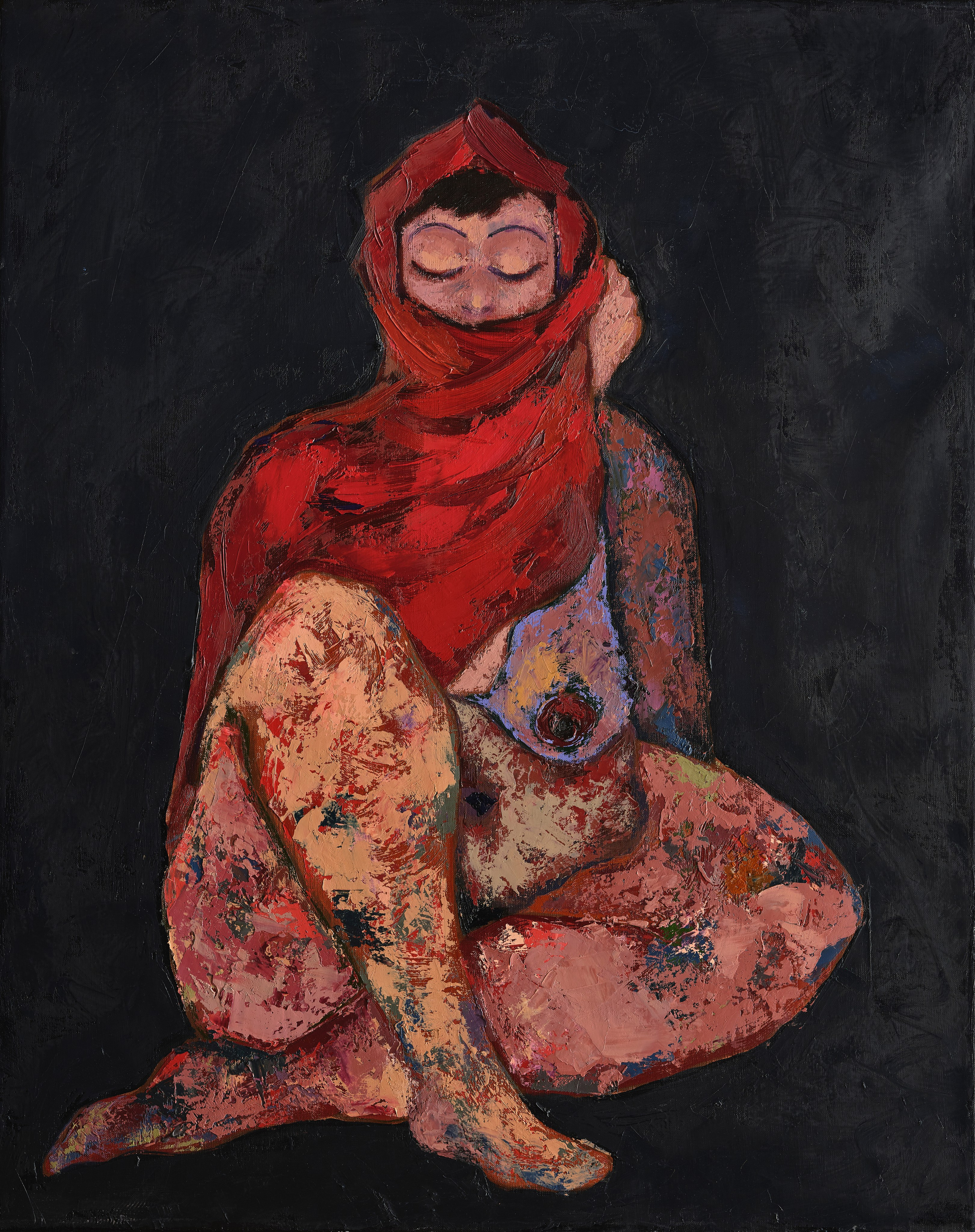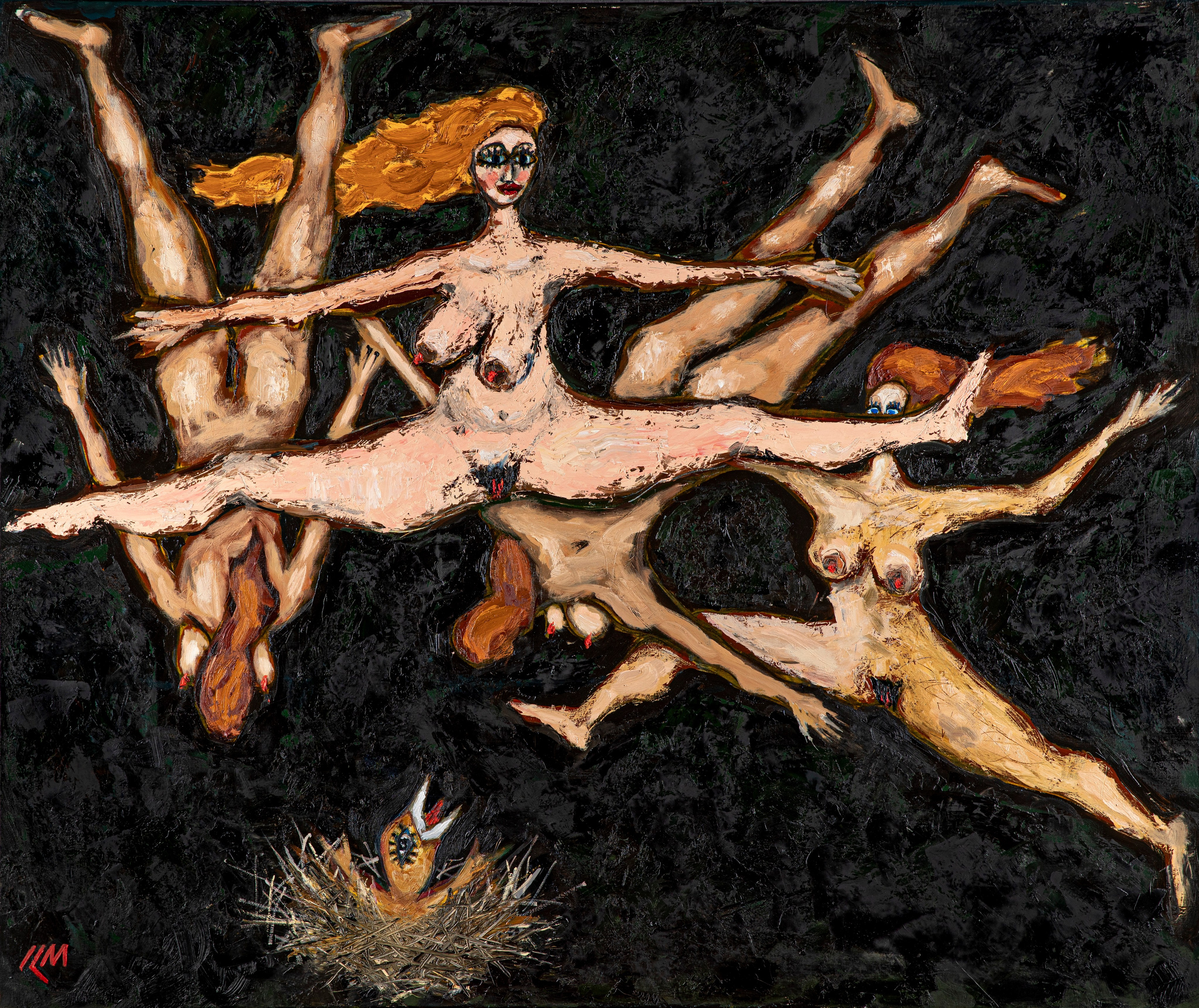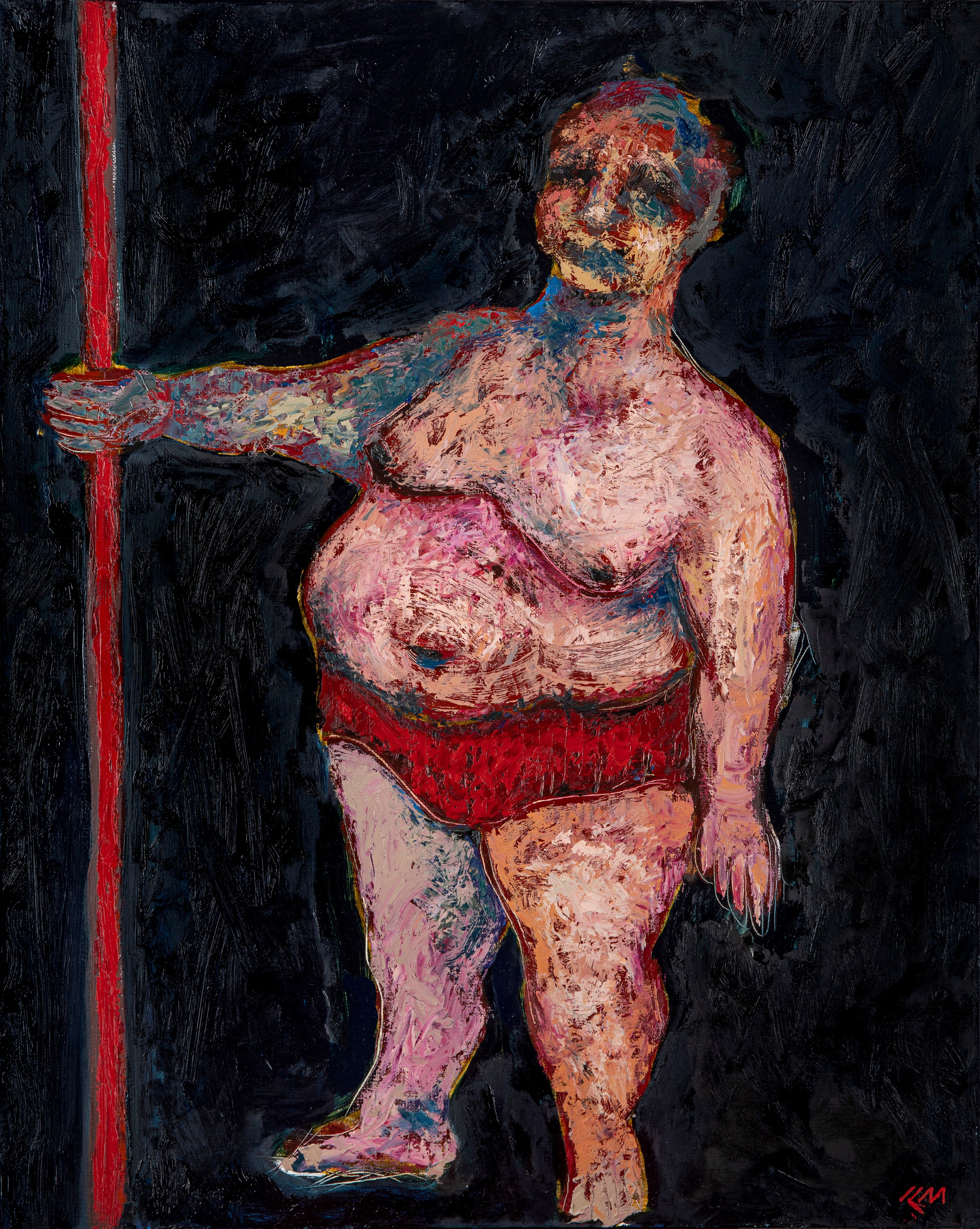KHASH
The painting “Khash” is a vibrant and symbolic representation of Azerbaijani meal and food culture, using humor and artistic elements to convey a layered narrative.
At the center of the composition is a cow, symbolizing the quintessential Azerbaijani man, complete with a mustache, traditional hat, and a tie in rich blue, red, and green hues. These colors, not only reflective of Azerbaijan’s vibrant culture and natural beauty, also represent the main colors of the artist’s palette, connecting the artwork to the country’s heritage and its lush landscapes. The cow’s ironic presence—overseeing a gathering where its own legs are served as the dish—infuses the piece with a playful yet self-aware humor, highlighting the deep-rooted traditions of the “Khash” ceremony.
The painting captures the essence of this communal event, where “Khash, ” a dish made from cow’s legs, is consumed alongside vodka and pickles in a celebratory atmosphere. The timing of the ceremony is cleverly depicted through the gradient background, transitioning from dark blue to sunrise pink, symbolizing the early morning hours when this gathering typically occurs.
Traditionally a male-dominated event, the inclusion of a well-dressed woman with elegant features reflects the shifting dynamics of Azerbaijani culture, where women are increasingly participating in such social meal ceremonies usually dominated by men. Her presence, adorned with jewelry and a stylish appearance, underscores the Azerbaijani woman’s pride in presenting herself with grace and beauty, no matter the occasion.
The contrasting character on the left, who partakes in the gathering without enjoying the dish itself, highlights the social aspect of the tradition. His joyful demeanor signifies that the true value of the “Khash” ceremony lies not in the food but in the camaraderie and togetherness it fosters.
The artist’s choice of a pink backdrop, exaggerated features, and surreal imagery creates a whimsical yet profound commentary on the interplay between tradition and modernity. The painting humorously yet thoughtfully invites the viewer to reflect on the evolving nature of communal traditions, individuality within collective rituals, and the cultural pride that binds people together.



